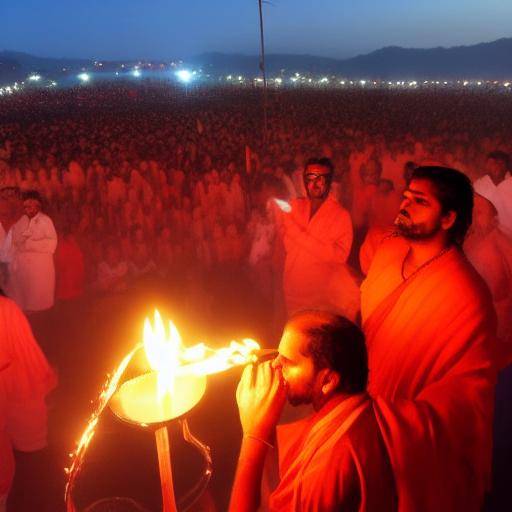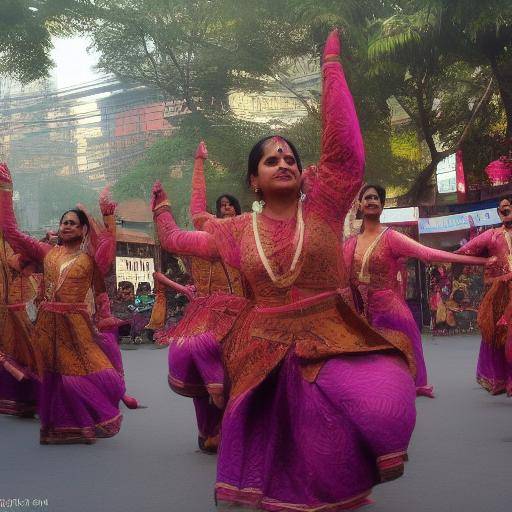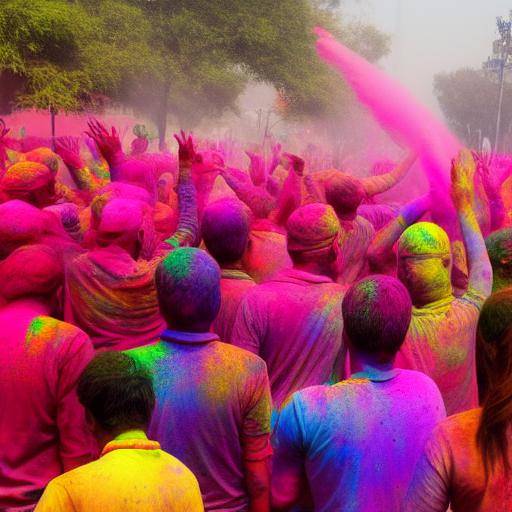
The Ganga Aarti ceremony is a spiritual, cultural and visually impressive event that takes place on the banks of the sacred Ganges River in India. This ceremony, which involves the ignition of lamps and floral offerings, is a manifestation of faith, devotion and reverence towards the Ganges, considered by many as a sacred river. In this article, we will explore in detail the rich history, spiritual meaning, tradition, benefits and challenges, as well as the future trends of this beautiful ceremony. We will also analyze the importance of India, the lamps (diyas) and the floral offerings in this context. Discover the fascinating ceremony of the Ganga Aarti and its connection to these cultural traditions!
Introduction
With its mystical waters flowing along the lands of India, the Ganges River has played a central role in the spirituality and culture of the country for millennia. The Ganga Aarti ceremony is a living manifestation of this deep connection between the Ganges and the people who worship it. During this ceremony, thousands of floating lamps are lit, the flowers are offered to the river and are made chants and prayers.
History and Background
The history of the Ganga Aarti dates back centuries, rooted in India's rich spiritual tradition. The ceremony has its roots in ancient Vedic practices and has evolved over time, adapting to the needs and beliefs of various communities along the Ganges River. From its origins to the present day, it has been a symbol of faith, devotion and gratitude to the river Ganges, considered an incarnation of the goddess Ganga in Hindu mythology.
The ceremony has undergone various transformations over the centuries, influencing the life and culture of the communities that inhabit the banks of the Ganges. In its most pristine state, the Ganga Aarti was made by ascetics and saints, but over time it has become a world-renowned show that attracts visitors and pilgrims everywhere.
Deep analysis
The Ganga Aarti is not only a spiritual ritual, but also a cultural phenomenon of great magnitude. The ceremony attracts people of different origins and beliefs, bringing them together in a moment of harmony and contemplation. Through the light of lamps, sacred music and floral offerings, the bond between humanity and nature is strengthened.
Comprehensive review
The Ganga Aarti, and its connection to the Indian tradition of lighting lamps or diyas, as well as the floral offerings, is a reflection of India's rich and colorful cultural diversity. These practices are a testimony to the spirituality and art that have flourished in India over the centuries.
Comparative analysis
The use of lamps and floral offerings as an integral part of the Ganga Aarti symbolizes the purity and devotion it carries with it. These traditions also find their place in celebrations and rituals in other parts of India, each with their own variations and symbolisms.
Practical Tips and Accessible Recommendations
If you want to participate in a Ganga Aarti ceremony or incorporate the tradition of lighting lamps and making floral offerings in your daily life, it is important to do so with respect and consideration for the culture and spirituality that these practices represent.
Perceptions of Industry and Expert Reviews
Cultural experts, religious leaders and academics have discussed extensively the importance of Ganga Aarti in the broader context of Indian spirituality and culture. Their perceptions provide a profound insight into the complexities of these sacred traditions.
Cases of Study and Applications in Real Life
The impact of the Ganga Aarti and the traditions of lighting lamps and making floral offerings extends beyond the ritual and the spiritual, and has found applications in various areas of social, cultural and artistic life in India.
Future Trends and Predictions
As India advances towards the future, these ancestral traditions will continue to play a significant role in the way society relates to its spiritual and cultural heritage. The Ganga Aarti and related practices will continue to evolve and adapt to changes in society and technology.
Conclusions and FAQs
Conclusions
The ceremony of the Ganga Aarti, together with the traditions of lighting lamps and making floral offerings, is a testimony of the spirituality, devotion and rich cultural heritage of India. These practices have endured over the centuries and continue to inspire people from different parts of the world.
Frequently asked questions
1. What is the importance of the river Ganges in Indian culture?
The Ganges River is considered sacred in Indian culture and is venerated by millions of people. He is attributed purifying powers and a unique spiritual connection.
2. How are the lamps or diyas used in the Ganga Aarti?
The lamps used in the Ganga Aarti, known as diyas, are usually made with cooked clay and are filled with oil.
3. What symbolizes the floral offerings at the Ganga Aarti?
The floral offerings symbolize reverence, devotion and beauty. It is considered an act of respect for the Ganges River.
4. When is Ganga Aarti celebrated?
The Ganga Aarti is celebrated every day at sunset in several locations along the Ganges River, Varanasi being one of the most famous places to witness this ceremony.
5. What is the spiritual significance of the Ganga Aarti ceremony?
The Ganga Aarti ceremony represents gratitude, spiritual connection and reverence to the Ganges River, considered a divine being in Hindu mythology.
6. How has the Ganga Aarti ceremony evolved over time?
The Ganga Aarti ceremony has evolved from being a rite made by ascetics to becoming a cultural and spiritual expression that attracts visitors from around the world.
In conclusion, the Ganga Aarti is an experience that envelops those who have the opportunity to witness it in a deep sense of spirituality and connection with India's rich cultural heritage. The traditions of lighting lamps and making floral offerings add a touch of beauty and meaning to this fascinating event, making it a unique celebration that transcends cultural and geographical barriers.




